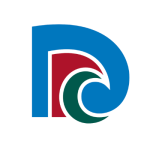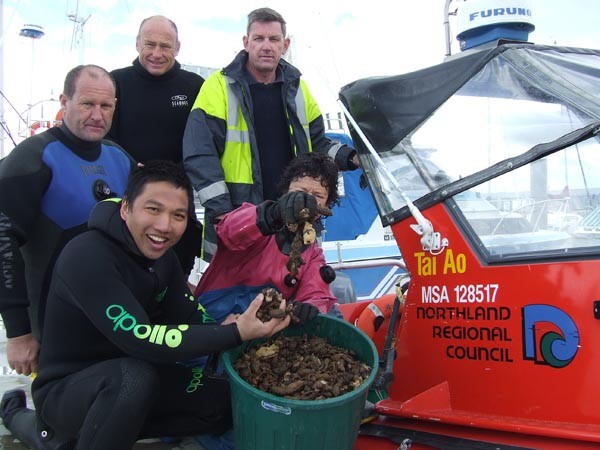10,000+ sea squirts removed in Northland first
More than 10,000 sea squirts have been removed from a Bream Bay marina in a groundbreaking pest control partnership between local authority staff, the marina operator and student volunteers.
In what organisers believe to be a Northland-first, a locally-funded team of four divers recently removed thousands of Styela clava (sea squirt) during a six-day operation last week.
Organisers are now cautiously optimistic the $20,000 clean-up may signal the successful containment of the unwanted marine invader in the Bream Bay area.
The pest was discovered in the Marsden Cove Marina during a national marine surveillance programme in April (subs: April, 2008) prompting officials to take early action to try to remove it before it could become permanently established.
The removal project was initiated by the Northland Regional Council and marina developer Hopper Developments, supported by staff and students from NorthTec and carried out by local divers from Whangarei-based Northland Underwater Technical Services. It is largely funded by the Regional Council and Hopper Developments, the first partnership of its type in Northland.
Craig Brown, Chair of the Northland Regional Council’s Environmental Management Committee, says all too often authorities are left to deal with the results of marine pest species which have been left to spread largely unchecked.
“Because in this case the sea squirts were contained within a relatively small area (Marsden Cove), we were presented with a rare opportunity to both size up the impact of a potential marine pest early and take proactive action to try to limit its spread.”
Cr Brown says although regular maintenance will be required to ensure sea squirts continue to be kept out of the marina, the costs would be relatively low compared to controlling the species if it had been left to spread unchecked.
Hopper Developments Manager Stace Hopper says the company was happy to take part in the clean-up as it was part of its brief to work with communities to provide a clean environment for their boating customers.
“We take marine pests seriously and want to encourage boaties to clean their hulls regularly,” Mr Hopper says.
Previous dive surveys conducted at the nearby Marsden Pt port facilities and immediately outside the marina had indicated Styela clava was confined to the marina.
Classified as an ‘unwanted organism’ by MAFBNZ, Styela can bulk up in very high numbers to form large heavy bunches, attaching itself to almost any surface it can find from mooring ropes and marine structures to vessel hulls.
“We don’t know how Styela clava will behave in New Zealand over time,” says Cr Brown, “but the Northland Regional Council wants to find out if acting now is better than waiting until it’s too late, especially when dealing with a valuable harbour like ours.”
To date, the impact of Styela clava in Whangarei Harbour is believed to have been relatively low, although it’s understood large populations of the marine pest are building in Auckland ports and marinas.
Styela are usually club-shaped with a tough, leathery skin that varies from brownish-white, yellow-brown or reddish-brown and favour protected areas like bays and harbours away from wave action.
Its body is cylindrical, tapering to a stalk and it prefers to settle on hard surfaces, especially man-made ones. It’s usually seen on jetty and wharf pilings, on aquaculture structures and equipment, on ropes and lines, and on the hulls of infested vessels. Adults grow up to 16cm long and the species establishes from the low tide mark, down to about 25m.
Detailed information on sea squirt and preventing its spread is available via www.biosecurity.govt.nz/seasquirt

